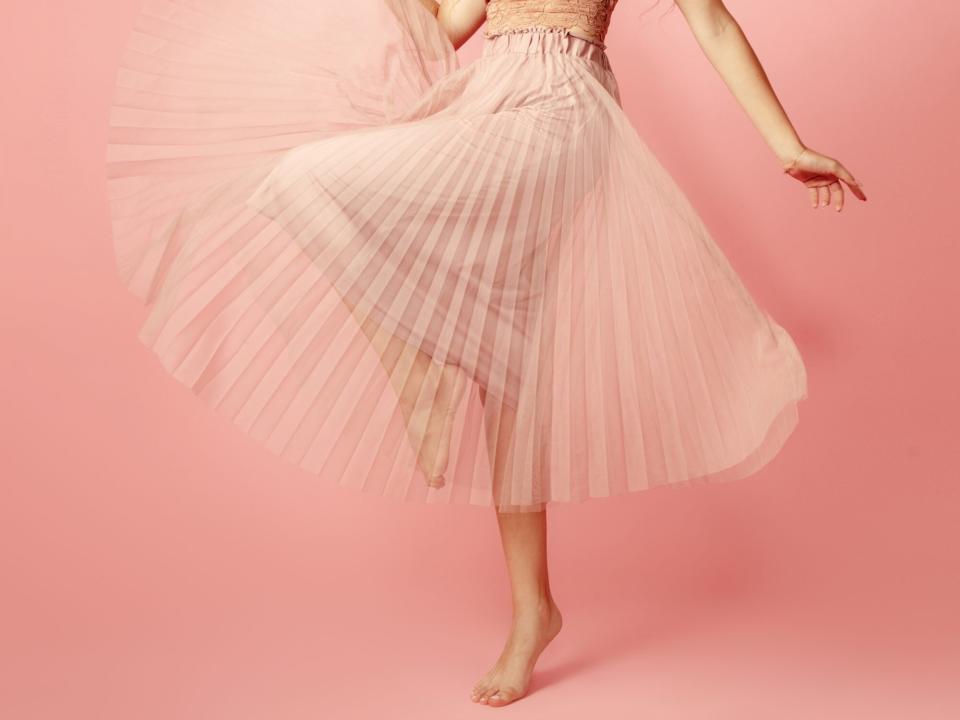Ask a Beauty Editor: How to Get Rid of Crepey Skin
Ever wanted to pick the brain of a beauty editor? Or get beauty product recommendations from someone who has tried them all? You've come to the right place. In our weekly series, beauty editor Hana Hong answers your biggest skincare, haircare, and makeup questions, all submitted by Real Simple readers. Tune in every Tuesday and submit your own burning beauty questions here for a chance to be featured.
What do you suggest to treat dry crepey skin on the arms and legs? –@mimichellej
With age comes wisdom...and wrinkles. Maybe it's all that thinking we're doing, but each muscle contraction causes the skin to bunch together, forming little lines between the bulk of the muscle that crease our skin.
One of the most frustrating kinds of wrinkles is the crepey skin you're referring to. For those who aren't familiar with the term, crepey skin is pretty much what the name suggests. Like the DIY material, it has a noticeably thin and shriveled appearance, and tends to impact larger areas like the neck and upper arms.
Although crepe paper is great for making fancy streamers and faux paper flowers, it's not so fun when it stars as the texture of your skin. While it's nothing dangerous, if it's something that bugs you there are a few things you can do to manage it.
For starters, the thinness of crepey skin is affected by a lack of hydration, so heavy moisturization is key. For crepey skin on your arms or legs, look for a body moisturizer that contains elastin stimulators ingredients like retinol and hydroxy acids, or ammonium lactate like Lac-Hydrin or AmLactin.
"Formulas that contain retinol, antioxidants, and anti-aging peptides are also a plus since they help thicken the skin's foundation and make crepeyness less apparent," says Hadley King, MD, a board-certified dermatologist in New York City. She has two top picks for her patients: Revision Skincare's Bodifirm ($150; amazon.com) and Alastin Skincare's TransFORM Body Treatment ($195; alastin.com). The first has antioxidants and plant extracts to help the skin appear more firm and lifted, while the latter contains TriHex peptide technology to stimulate the production of new collagen and elastin.

Getty Images
Sun damage is the most common cause of crepey skin (it happens when sun breaks down the elastin), so it's vital to wear sunscreen, rain or shine. Make sure to use a broad-spectrum sunscreen with at least SPF 30 and don't forget to spread it down to your neck, which is often where crepey skin starts. On the same note, please avoid tanning at all costs, which is where crepey skin thrives.
Exfoliation is also a must, and a great technique to do that is with dry brushing. Not only does this work as a light exfoliant, it also improves circulation, boosting firmness as a result. As its on-the-nose name implies, you use a specific brush, typically made with natural bristles, to literally brush your body before you shower. Try this one from Amazon ($10; amazon.com), which is perfectly handheld and includes bonus massage nodules buried among the bristles to keep you from pressing too hard.
You may also go the in-office route, if you so choose. Dermal fillers can be helpful—for example, crepey skin on the upper arms can be treated with injections of diluted dermal fillers like Radiesse and Sculptra. "These stimulate collagen production and improve the texture of the skin and decrease laxity," says Dr. King. "The injected materials create the equivalent of a gel mesh that holds the skin more taut, and over time they act as biostimulators to tighten and improve skin tone."
But if you're looking for a cheaper, at-home method, dermarolling is a solid alternative. This is a cosmetic procedure in which thousands of tiny little needles are inserted into the surface of skin with a rolling device. "This helps create channels in the skin to stimulate and produce more collagen and elastin," says alpha-H facialist Taylor Worden. I know that sounds super freaky, but don't worry—it's not actually painful at all. Think of it like shaving: you can feel it, but it won't hurt if you're doing it right.
While wrinkles and crepey skin wrinkles aren't exactly the same (one is more about creases and fine lines while the other is about the fragile texture), both conditions often occur together and can benefit from similar treatments. As with all skincare, it winds down to boosting your body's collagen and hydration levels. While you won't be able to revert to the prepubescent skin of your youth (good skin is wasted on babies, am I right?), you'll notice a significant difference over time.

